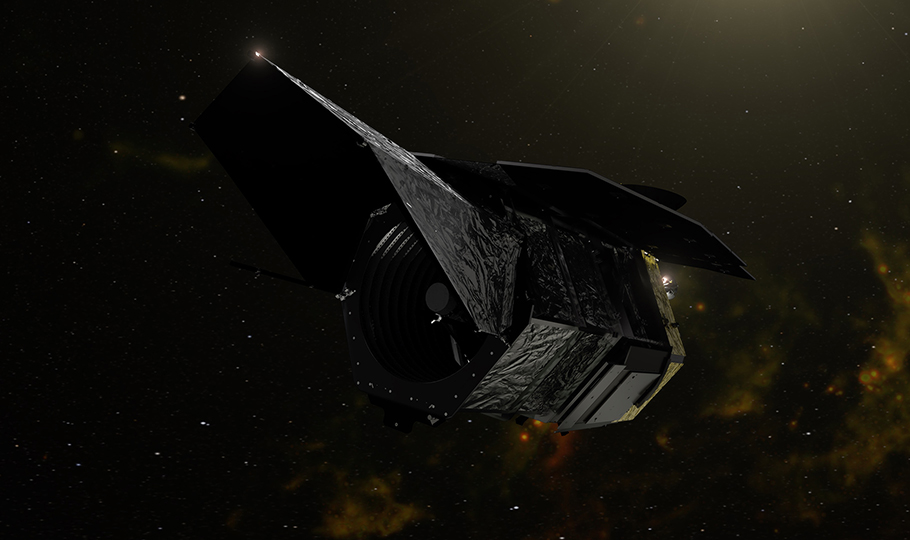Call for Input into Roman’s Core Community Surveys: White Paper Submissions
Karoline Gilbert Space Telescope Science Institute

The Roman Mission announces the opening of white paper submissions, describing the observational strategies necessary to enable the astronomical community’s desired science investigations with Roman’s Core Community Surveys. White papers are due by 16 June 2023. The white papers will be an important component of the input to the committees charged with defining the Core Community Surveys.
The Nancy Grace Roman Space Telescope, NASA's next flagship observatory, is planned for launch in late 2026. The Roman Mission requests the astronomical community's input to the community-led definition of the Roman Space Telescope's Core Community Surveys. Combined, these surveys are anticipated to use the majority of the observing time during Roman’s first five years. The cosmology and exoplanet science requirements for these surveys leave significant parameter space available to define the observational strategies (filters, depth, cadence, etc.) in a way that will enable a broad range of other astrophysical investigations. This whitepaper call is the second part of a two-part request, focusing on science drivers and the requirements they place on the design of the Core Community Surveys. The call for technically focused white papers, describing what observing strategies are needed for a given science investigation, is now open, with white papers due by 16 June 2023. The first avenue, submission of a short, one-to-two-paragraph "science pitch" (including a questionnaire), resulted in more than 100 submissions. Previous submission of a science pitch is not required for submission of a white paper.
All members of the community are encouraged to submit their science investigation ideas. The Roman Mission wants to hear from scientists worldwide across all career stages, positions, and types of institutions. All input will be passed to the committees that will be formed of community members and tasked with defining the Core Community Surveys.
The Roman Mission team will be hosting a series of virtual Q&A sessions aimed at facilitating community collaboration and removing barriers to writing white papers during the last week of April and the first week of May. Each session will be focused on one of the Core Community Surveys. However, anyone considering submitting white papers, or interested in joining a white paper effort, is encouraged to attend whatever session fits their schedule.
For full details on this Request for Information, as well as information on joining the upcoming virtual Q&A sessions related to the white paper call, please visit the Call for Input page.
A detailed description of the purpose of, and requested content for, white papers can be found on the White Papers page.
If you have questions about the white papers or the submission process, please send emails to both help@stsci.edu and roman-help@ipac.caltech.edu, with the subject line “Roman question about community input for core survey definition.”
FAQ: Why should I write a white paper?
The Core Community Surveys will be defined by the astronomical community and will include a High Latitude Wide Area survey, a High Latitude Time Domain survey, and a Galactic Bulge Time Domain survey. The data from the Core Community Surveys will enable a host of general astrophysical investigations in addition to addressing the Roman Mission's science objectives related to cosmology and exoplanet demographics.
As one specific example, in order to meet Roman's dark energy goals, a requirement on the design of the imaging component of the High Latitude Wide Area Survey is to enable precision measurements of the shapes of hundreds of millions of galaxies. This leaves open significant parameter space for the survey data to be relevant for other science areas. Depending on the choice of filters, the data may be more (or less) useful for studies of galaxy evolution. Depending on the chosen balance of area versus depth, there may be more (or less) opportunity for discovering new celestial objects that are rare per unit area. Moreover, all of these choices may affect how useful the survey data are for studies of more nearby objects, such as those belonging to the Milky Way halo or solar system. There will be many other such trades to consider, for all three Core Community Surveys.
The preceding example lists only a small subset of the science investigations that could be enabled by Roman’s survey data. By receiving input from the community on as wide a range of science use cases as possible, the committees tasked with defining each of the Core Community Surveys will be able to better understand what trade studies to conduct, and identify what additional community input is needed, in order to design surveys that best meet the needs of the astronomical community.
FAQ: How is this related to past and future NASA ROSES Calls for Roman Science Investigations, and what other avenues are there to get involved with Roman?
A recent overview article in the STScI Newsletter summarizes the various ways the community can get involved with Roman. Members of the science community at US institutions were recently invited to apply for support to participate in Roman preparatory science activities and will have future opportunities to apply for funding, via the Roman elements of ROSES solicitations. However, this is separate from the process by which the Core Community Surveys will be defined, including the Roman CCS white paper call described here. Funded science teams are not responsible for defining or implementing the surveys.

